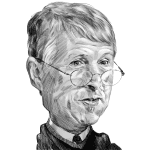Of the British Empire. John’s father Peter Jay was born in New York in 1704 and followed in his father’s footsteps, becoming a wealthy trader in commodities including cloth, timber, furs, and wheat. Peter Jay’s father, Auguste, was a French Huguenot who fled from religious persecution
In his native country across the Atlantic to North America, eventually settling in New York City where he adopted the name Augustus Jay and became a prosperous merchant. John’s mother Mary Jay came from a prominent Dutch family and her father Jacobus van Cortlandt
Was a merchant and politician who served on the New York Assembly and was twice Mayor of New York City, despite not being able to speak English very well. Little is known of Mary’s life and she may have been illiterate, but she appears to have
Been an intelligent and dutiful woman who was often ill. Peter Jay married Mary van Cortlandt in New York’s Dutch Church in 1728, and the couple would have ten children, seven of whom survived to adulthood. John Jay was born during a century of warfare between Britain and France that spilled over
From Europe to their colonial possessions in North America. For the merchants of New York City, the frequent Anglo-French Wars disrupted their commercial activities and placed them in danger from French and Indian raids from the north. A month before John’s birth, Peter Jay decided to seek refuge in the countryside, moving
To a farm in the village of Rye near Long Island. Although the British and French made peace in 1748, hostilities resumed in 1754 when Colonel George Washington of the Virginia Regiment clashed with French and Indian troops near Fort Duquesne in the contested Ohio country.
The incident triggered the conflict known as the French and Indian War in North America, which later formed part of the Seven Years War in Europe. By the end of the conflict in 1763, France lost nearly the entirety of its huge North
American empire, ceding Canada in the north to Britain and Louisiana in the west to Spain. As loyal subjects of the British Empire, Peter Jay and his family celebrated the great British victory. As a child John began his studies tutored by his parents, and when he started to learn
Latin at the age of six, his father recognised him as an excellent student. Before John’s eighth birthday, he was sent to school in nearby New Rochelle, where he received lessons from a Huguenot schoolmaster Peter Stoupe for three years.
In 1756, at the age of ten, he returned home and continued his studies with a private tutor, George Murray. In 1760, the 14-year-old Jay enrolled in King’s College in New York City, the institution that would eventually become Columbia University.
By the time Jay began his studies there, the college was six years old and only had around twenty students in total. The college president was Samuel Johnson, a minister in the Anglican Church, who taught the first- year students Greek and Latin using religious and philosophical texts alongside rhetoric, oratory, and logic.
From the second year onwards, the students would study sciences including mathematics, surveying, physics, and astronomy in addition to the humanities, although Johnson did not want the students’ scientific pursuits to undermine their Christian faith. In 1762, during Jay’s third year, the Oxford classicist Myles Cooper replaced Johnson as
President, and so he spent his final year and a half in college studying Homer, Herodotus, and Thucydides. During his time at King’s College, John Jay became close friends with Robert Livingston Jr., a member of a prominent New York family whose father served as a justice of the colonial Supreme Court.
Although both were ambitious young men, Livingston tended to be outgoing and social while Jay was understated and serious. Another student of King’s College who would become a lifelong friend and collaborator was Gouverneur Morris, who would go on to become a prominent politician in New York
And a member of the constitutional convention in Philadelphia, where he wrote the preamble to the Constitution of the United States. At his graduation on the 22nd of May 1764, Jay gave a speech about the “happiness and advantages from a state of peace,” following the end of the French and Indian War in 1763.
While the teenage John Jay acted as his father’s business representative during his time at King’s College, after graduation he opted for a legal career and in June 1764 he worked as a clerk for the lawyer Benjamin Kissam. While Jay was studying law, the British government was attempting to increase revenues from its
American colonies to replenish government coffers after an expensive war and to pay for the protection of the colonies from the IndiansNative Americans at the frontier. As one of the major commercial centres in North America, New York was significantly impacted by changes in customs duties.
In 1764 the British Parliament passed the Sugar Act in an effort to increase customs revenue from the Americas. While the law reduced the duty from six pence per gallon of molasses to three pence, it included measures to enforce the duty and stipulated that cases would be tried by judges
Appointed by the King rather than in local common law courts. In response, the New York Assembly petitioned Parliament and claimed that as British subjects, they would only accept taxes imposed by their own elected representatives. In March 1765, Parliament passed the infamous Stamp Act, which levied a tax on different
Types of printed material including all legal documents. In October 1765 New York City hosted the Stamp Act Congress, whose delegates sent yet another message to Parliament that they would not consent to taxation without political representation. As the Stamp Act came into operation at the beginning of November, a mob rioted in New
York City and attacked British troops. In early November New York’s lawyers had no access to stamped papers and could not carry out any business, so Jay accompanied his friend Livingston on a tour of New England before returning to Rye.
When the Stamp Act was repealed in May 1766, Jay returned to work with Kissam. As he observed the political developments in the 1760s, Jay concluded that Parliament had backed down on the Stamp Act and had amended the Sugar Act as a result of the respectful
Petitions and resolutions delivered by political bodies such as the New York Assembly and the Stamp Act Congress, rather than violent protests such as the Stamp Act Riots. After a laborious and tedious four-year clerkship writing legal documents by hand with limited
Guidance from Kissam who was often away at court, Jay was sworn to the bar in October 1768 alongside his friend Robert Livingston. The two men decided to work together as a partnership on the belief that by making use of their connections it would be easier to find work.
Jay spent most of 1769 as clerk to the commission dealing with a boundary dispute between the colonies of New York and New Jersey. The members of the commission included prominent men such as Peyton Randolph, the speaker of the Virginia House of Burgesses, while Kissam was one of the lawyers representing New York.
After several months of deliberation, the commission decided largely in favour of New Jersey but opted not to consider appeals until a second session in Hartford, Connecticut later that year. When there weren’t enough commissioners in Hartford to form a quorum, those present
Decided to hold another session in New York City the following July, where only one commissioner turned up. By this time both sides had largely agreed to the new boundaries, but Jay still hadn’t been paid for his work.
By 1772, even after the governors and assemblies in both colonies agreed on the new line, Jay refused to release the record of the commission’s proceedings, perhaps due to his unpaid bills, and it was only after a special law was passed in New York in February 1773 that Jay relinquished the record.
From November 1770, Jay was part of a gathering of New York lawyers known as “the Moot,” where the members present discussed the difficult legal issues of the day, many of which involved intercolonial relations. By this point, with enough work of his own, he dissolved his legal partnership with Livingston.
Soon he had hundreds of cases, most of which involved acting for clients trying to recover commercial debts, and by 1774 he was among the richest lawyers in the colony earning about £1000 a year from his practice.
Jay was frustrated by the fact that many of the judges in the lower courts had no legal training, and in late 1772 he and Livingston proposed to have lawyers appointed as circuit judges to serve as advisors to judges in lower courts, though the proposal was rejected by the Governor and his Council.
In spite of his reputation at King’s College as an unsociable student, in the early 1770s Jay was the manager of a dancing assembly. Dances were often the venue for young men to meet young women, and in the winter of 1772-73 he met Sarah Livingston, the daughter of William Livingston, a New York politician
And lawyer and cousin of his friend Robert. At the time Sarah was an intelligent and beautiful girl of sixteen and already had many suitors for her hand. On the 28th of April 1774, the 28-year-old Jay married the 17-year-old Sarah at her father’s
Home in Elizabethtown, New Jersey, where a young Alexander Hamilton had stayed a couple of years earlier after first arriving in North America. Sarah Jay proved to be a devoted wife who supported her husband’s political career by serving as a trusted advisor, running the household while he was out on business and
Entertaining political leaders at their home. Over the course of their marriage the couple would have six children, five of whom would survive childhood. Despite the repeal of the Stamp Act in 1766, tensions continued to brew between Britain and its North American colonies over Parliament’s right to taxation.
After a few years of calm, Parliament passed the Tea Act in May 1773 in an attempt to prevent the East India Company from going bankrupt. This prompted another wave of protests, including the Boston Tea Party of December 1773, when
The revolutionary “Sons of Liberty” boarded an East India Company ship and threw its cargo of tea into the harbour. In response to the events in Boston, Parliament passed a series of punitive laws closing Boston harbour and imposing direct rule on the colony of Massachusetts.
In May 1774, Jay was named to a committee which considered how to respond to these latest Acts of Parliament, popularly known as the Intolerable or Coercive Acts. While the radicals wanted to show solidarity with Boston by boycotting British trade, the
New Yorkers did not wish to act alone and called for a continental congress similar to the Stamp Act Congress. In July, Jay was one of five delegates chosen to represent New York City at the congress in spite of his limited political experience.
In August he left New York and accompanied his father-in-law and fellow delegate William Livingston to the First Continental Congress in Philadelphia. Although each colony had its own interests, the delegates were motivated by the spirit of compromise and the desire to send a joint message to London from the twelve colonies
Represented at the meeting. A few days after Congress opened on the 5th of September 1774, Jay was named to a committee tasked with formulating a statement of America’s rights, where he joined the radical John Adams of Massachusetts in the belief that the colonists’ political rights were given not only by the
British constitution but by nature and God. Most of the delegates wanted to avoid war and supported a boycott as the most effective means of resistance. Indeed, even the more radical delegates hoped to remain within the British Empire, and when
Jay was asked by Congress to draft The Address to the People of Great Britain, he reminded them of the colonists’ contribution to victory in the French and Indian War and called for a political union of equals between Britain and its American colonies.
Jay returned to New York in November 1774, as the city was increasingly divided between the Patriots who supported resistance and the Loyalists who supported the British Crown. Among the leading Patriot voices was the young Alexander Hamilton, a student of King’s College whom Jay may have met at the Livingston house in Elizabethtown.
On the 23rd of April 1775, news reached New York that British troops under General Thomas Gage had exchanged fire with patriotic militiamen in Concord and Lexington in Massachusetts, setting off the fuse of the American Revolutionary War. Jay was named a delegate to the Second Continental Congress and arrived in Philadelphia in mid-May.
Jay supported the moderate position of preparing for war while trying to resolve the conflict diplomatically, and was named to a committee that drafted a petition to King George III later known as the “Olive Branch Petition,” appealing to the King as the protector of American liberties.
In June, Congress established the Continental Army and appointed George Washington as its commander-in-chief, ordering him to take command of the Patriot forces outside Boston. After a summer recess, Jay returned to Philadelphia in September where he took part in debates about trade.
He argued that the ports in North and South Carolina that the British had kept open should remain open, and that the colonies should be allowed to trade freely with other nations despite laws that limited colonial trade within the British Empire. Congress decided otherwise and adopted a general ban on trade with limited exceptions.
In January 1776, Jay was involved in secret negotiations with Lord Drummond, who claimed that senior government ministers had approved his plan for the colonies agree to provide the King with a “perpetual grant” raised by whatever means the colonists decided were appropriate. While Jay entertained these proposals, he also supported Benjamin Franklin’s efforts
To establish relations with France. After returning home to attend the birth of his son Peter Augustus, Jay returned to Philadelphia in March. Coming to terms with the fact that the prospects of peace were increasingly remote, Jay turned to military matters and supported the use of privateers to attack British shipping.
In April he secured a commission for his friend Alexander Hamilton in the artillery and was involved in military preparations in New York, where a large British fleet was expected. In May, Jay left Philadelphia to attend the New York Provincial Congress, where he was
Involved in arresting and imprisoning Loyalists and forming a new state government. As a result, he was not in Philadelphia in early July when Congress adopted Jefferson’s Declaration of Independence. In late June, a large British fleet commanded by Admiral Richard Howe, carrying an army
Under the command of his brother General William Howe, arrived in New York harbour. The Provincial Congress met in the city of White Plains on the 9th of July and debated the question of independence, where Jay drafted a bold resolution in favour of the declaration
That was unanimously adopted, thus forming the State of New York. In the summer of 1776, Jay was named to a committee that attempted to bolster the defence of New York City with little success. On the 27th of August, Washington’s army was defeated at the Battle of Long Island
And it was only thanks to a daring night operation on the 29th that Washington managed to evacuate his men to Manhattan. In early September Jay joined the Provisional Convention at its new home in the village of Fishkill along the Hudson Valley, where he brought his wife and parents.
He was soon appointed to a conspiracies committee which employed the spy Enoch Crosby to gather information about suspected Loyalists. New Yorkers who attempted to remain neutral were forced by the committee to choose sides, and when Jay’s friend from King’s College Peter van Schaak refused to take the oath
Of allegiance to New York, he was exiled to New England. In the meantime, Washington stumbled from defeat to defeat as his Continentals were driven out of New York, across New Jersey, and escaped across the Delaware to Pennsylvania by early December.
At this time Jay’s Address of the Convention of the Representatives of the State of New York to Their Constituents was published, in which he claimed that America was destined to win the war since the millions of inhabitants in the new nation would not submit to the loss of their liberties.
In early 1777 Jay worked on the New York state constitution, favouring a legislature with two houses and a powerful executive, reflecting his anxieties about giving the people too much power. By March the Provincial Convention evacuated further up the Hudson to Kingston, and it
Was there that Jay presented his draft constitution, which included a powerful governor elected to a three- year term, an Assembly of at least 70 members elected each year, and a Senate of at least 24 members serving four-year terms. In mid-April Jay left Kingston for Fishkill following the death of his mother, and by
The time he returned to Kingston in early May his constitution had been adopted with a few changes limiting the governor’s powers on appointments, and the convention elected him Chief Justice of New York. Although Jay supported his cousin General Philip Schuyler as governor, George Clinton
Was elected to the office and would retain the governorship for the next eighteen years. At this time, the State of New York was being threatened by British redcoats from both north and south. In the north, General John Burgoyne was marching down the Hudson valley towards Albany with
5,000 men while in the south Howe’s army controlled New York City and its surroundings. In July Jay and Gouverneur Morris met Washington at his headquarters in Philadelphia requesting reinforcements, and when refused prevailed upon Congress to send 500 riflemen. In September Chief Justice Jay opened the state Supreme Court with a speech defending
The revolutionary cause and urging the people to abide by the constitution. The following month, the state government was forced to evacuate Kingston after Burgoyne reached Saratoga, but on the 17th of October the British general was forced to surrender to General Horatio Gates.
While the victory at Saratoga convinced France to recognise American independence and join the war against Britain, further south Howe had defeated Washington at Brandywine Creek and had captured the Continental capital of Philadelphia. In addition to his role as Chief Justice, Jay was a member of the state’s Council
Of Revision, which examined the constitutionality of the laws passed by the legislature. He soon realised that the Council could simply be ignored by the legislators. In 1778, after Congress returned to Philadelphia, Morris wrote to Jay and asked him to return to Congress.
Although he was reluctant to leave his family behind, Governor Clinton and the New York legislature asked Jay to go to Philadelphia to ask Congress to settle a dispute over the territory to the west of the Connecticut River which had been claimed by both New York and
New Hampshire, but in 1777 the New Hampshire settlers declared independence as the state of Vermont. In September 1778 Vermont’s political and military leader Ethan Allen appeared in Philadelphia to lobby for recognition of statehood before Congress. Within days of returning to Philadelphia, Henry Laurens resigned as President of the
Continental Congress and Jay was elected in his place on the 10th of December. Although Congress had powers over the army and foreign policy, it had no power of taxation and relied on funds from the states. Many politicians in Congress believed as Jay had done that their work in state legislatures was more important.
The President of the Congress presided over its sessions and although he was not usually an active participants in the debates, he would summarise the issue and could influence the way delegates voted. During Jay’s presidency of Congress, the United States was facing an economic crisis as the continental dollar sharply depreciated.
While Congress could print money, it could not raise taxes and received limited funds from the states, resulting in hyperinflation. Furthermore, if the United States were defeated in the war, the continental dollar would be worth nothing. Jay drafted a letter from Congress to the people in which he made the case that the
United States had both the ability and the political capacity to pay its war debts, ending with an appeal for loans and taxes from the states as the price of liberty. In spite of the eloquence of Jay’s letter, it failed to prevent the continental dollar
From losing even more value over the course of the year. During his presidency, Jay did not forget his obligations to his colleagues from New York and passed on messages from Governor Clinton to Congress on the issue. A congressional committee sent to Vermont in July proved unsuccessful, and in September
Congress accepted Jay’s recommendation to ask New York, New Hampshire, and Massachusetts to pass laws authorising a congressional boundary commission. This latest approach failed when New Hampshire and Massachusetts refused to pass such laws, and the issue would not be resolved until Vermont’s admission to the union in 1790.
As President of the Congress, Jay met and corresponded with General Washington throughout 1779, and the two became firm friends. Washington was also concerned about the economy, which made it increasingly difficult for him to supply his men. Most of their correspondence involved Washington asking Congress for supplies, but the two
Men also exchanged more personal letters and shared their frustrations at Congress and its lack of powers. Due to congressional authority over foreign affairs, Jay met frequently with foreign representatives including Conrad Alexandre Gérard of France and Don Juan de Miralles, the unofficial Spanish representative.
Jay was often drawn into congressional disputes by Gérard in order to curry favour with France, while Miralles and Jay were involved in heated discussions about rights to the Mississippi River, which separated the United States from Spanish Louisiana.
In April 1779 France and Spain signed a secret alliance, and by June Spain had joined the war with Britain. Having served as President of the Congress for almost a year, at the end of September Jay agreed to go to Spain as Minister Plenipotentiary.
In October 1779 John and Sarah Jay departed from the United States, sailing first to the French island of Martinique before boarding a French ship to Cadiz. Jay’s instructions from Congress were to seek diplomatic recognition, a military alliance, and financial support.
Since Spain had gone to war with Britain to recover Gibraltar rather than out of any sympathy for a revolutionary republic, this was an uphill task. In March 1780, Jay received word from the Conde de Floridablanca that the King, Carlos
III, was prepared only to admit him as a private citizen rather than as a diplomatic representative. With diplomatic recognition out of reach, Jay met Floridablanca for a series of talks about an alliance and financial support, but the Spanish Foreign Minister insisted on recognition
Of Spanish rights to the Mississippi and claimed that Spain was in no position even to pay Jay’s expenses. As a result, Jay could only pay his bills with help from Benjamin Franklin in Paris. After another year of fruitless negotiation, in September 1781 Jay presented to the Spanish
Minister a draft treaty with terms including Spanish rights to the southern Mississippi in return for immediate military support, warning that the terms would no longer be on offer in general peace negotiations. Even after news of Washington’s victory over Cornwallis at Yorktown reached Spain
In December, Jay realised that the Spain was not serious about negotiations. Although Jay failed to obtain an alliance with Spain, the Spanish had nevertheless given indirect support to the American war effort by capturing West Florida from Britain. In March 1782 the British Prime Minister Lord North’s government resigned, paving the
Way for peace negotiations. Congress had named Jay among its peace commissioners and in late June he joined Franklin in Paris. Although the British decided to end offensive operations in North America, the British army remained in New York and Charleston, South Carolina.
France and Britain were still at war, while Spain had captured Minorca and was planning to attack Gibraltar. In the 1778 treaty, Congress agreed with France not to negotiate with Britain separately, a commitment that Franklin and Jay were keen to honour, and France had also agreed with
Spain not to make a separate peace with Britain. When Jay met British Ambassador Richard Oswald, he objected that his instructions did not recognise American independence and informed Oswald that any peace terms would have to be favourable to France and Spain. However, in discussions with Spanish Ambassador Aranda and French Foreign Minister Vergennes,
The Americans found that France supported Spanish claims east of the Mississippi and realised they might get better terms talking directly with Britain, though Franklin remained cautious about offending French sensibilities. By the time Oswald received his new commission recognising the “thirteen United States
Of America,” Franklin was ill while John Adams, who had been also appointed to the American peace commission, was still negotiating with the Netherlands. As a result, Jay drafted a treaty that recognised the independence of the United States, set out its proposed boundaries, provided for the evacuation of British troops and an ambitious
Reciprocal free trade agreement. The treaty included language that provided for the articles within to be inserted into an eventual Franco-British treaty, thus allowing the Americans to negotiate with Britain alone while keeping their commitments to France. After the British rejected Jay’s draft, Sir Henry Strachey arrived in Paris to assist in the negotiations.
At around the same time, John Adams arrived from the Netherlands and Jay was happy to find that his Massachusetts colleague was more inclined to favour talks with the British without first consulting France, an approach Franklin eventually agreed to. While the Americans were happy to compensate British citizens for their lost property,
They were not prepared to do so for American Loyalists. After further talks between the five men about boundaries and fishing rights, Jay prepared a second draft by the 4th of November. When the British tried to press their claim on compensation for the Loyalists, Franklin
Claimed that Congress was in the process of investigating how much the British should pay for damage done to American property, and in the end the British settled for a token recognition of Loyalist claims. On the 30th of November 1782, the British and American negotiations agreed on preliminary
Peace terms that proved extremely favourable to the United States. Nevertheless, they had the delicate task of informing the French on the one hand and Congress on the other. When Franklin met an outraged Vergennes, he denied the American negotiators had done anything improper.
Meanwhile, Adams and Jay worked on a joint letter to Congress, which had explicitly instructed them to consult with the French talking to the British. As the American commissioners considered their negotiating objectives for the final treaty, they received news that the Earl of Shelburne, the British Prime Minister, had resigned in
March 1783 after being criticised for giving too much away in the negotiations. In April a new administration brought together former Prime Minister Lord North and his rival Charles James Fox, but although they sent David Hartley to negotiate a final treaty,
It became clear that the British government did not want to seek parliamentary approval for new terms, and the final treaty copied the preliminary agreement almost word for word. After Britain had concluded its negotiations with France and Spain, the Treaty of Paris
Was signed on the 3rd of September 1783, officially ending the American Revolutionary War. After the treaty was ratified by both parties and exchanged in May 1784 and Jay had settled his accounts from his time in Spain, the Jays left Paris and arrived back home in late July,
Where he was soon awarded the freedom of New York City. Upon his return he learned that he had been elected Secretary for Foreign Affairs, filling a role that had been left vacant by his friend Robert Livingston’s resignation the previous spring.
In December 1784 Jay accepted the post while Congress met in Trenton, New Jersey, and at the same session it decided to move temporarily to New York City. Reconstruction work had started after the end of the war, and the Jays built a grand three-storey house which they moved into in 1785.
The Jays were among the wealthiest people in the city, and in 1785 he opened an account at the Bank of New York, founded by his friend Alexander Hamilton the previous year. Jay was one of the few American founding fathers who was a true Christian believer, and he
Provided support to rebuild the Trinity Church where he had previously worshipped. Although Jay was responsible for American foreign affairs and supervising American diplomats, Congress had limited powers and its delegates typically attended to other business. At the end of the Revolutionary War Washington disbanded the Continental Army, and without
A standing army or navy Jay and his ambassadors had little leverage in negotiations. Despite the recent peace, tensions remained between Britain and the United States as the British refused to evacuate key forts in the northwest, while Britain protested against state laws that hindered the recovery of British debts.
In March 1785 John Adams was appointed ambassador to Great Britain, and Jay urged him to raise the northwest forts with the British government, while urging Congress and the states to carry out their treaty obligations. In October 1786, Jay presented a report to Congress in which he argued that the states
Had delegated power to Congress to make war and peace, therefore any peace treaties made by the federal government were binding on the whole nation and superseded state law. He then determined that several states did enact laws in violation of the Treaty of Paris in relation to debt collection and the rights of Loyalists.
Accordingly, Jay recommended that Congress urge the states to enact a law that he drafted to repeal any offending laws, and informed Adams that the United States had indeed been violating the treaty. In March 1787 Congress adopted Jay’s approach, and by the summer Jay was able to report to
Adams that progress was being made, though when Adams left London in February 1788, Congress did not send a replacement, leaving many issues unresolved. In addition to ongoing issues with the British, Jay also had to deal with France. After Franklin agreed to an unfavourable consular convention with France in 1784 which was rejected
By Congress, in December 1787 Jay authorised Thomas Jefferson to renegotiate a new convention that subjected French consuls to American law, which was one of the first treaties ratified by the Senate after the Constitution of 1789 came into effect. As for Spain, Jay returned to the question of the Mississippi which he had discussed
With Spanish diplomats several years earlier. Now that the United States was independent, it was in a stronger diplomatic position, though the Spanish continued to insist on exclusive rights to the southern part of the Mississippi on the basis that Jay had offered this in 1780.
The Spanish representative Gardoqui warned that without agreement on the issue, Spain would stop trading with the United States. Jay agreed with the northern states that the Spanish trade was more important than the Mississippi and proposed to limit American use of the river for 25 years, but Congress
Remained divided on the issue and it remained unresolved. Jay was also involved in dealing with the Barbary Powers, the Islamic states in North Africa which routinely attacked merchant ships in the Mediterranean in order to capture slaves for ransom. Jay authorised American diplomatic representatives in Europe – Adams, Franklin, and Jefferson
– to make peace with the Barbary States. While a favourable treaty was signed with Morocco, there was no progress with the three others. During his service as Secretary of Foreign Affairs, Jay lamented Congress’s lack of powers and supported a strong national government.
By asserting the supremacy of federal law over state law in his report on American violations of the Treaty of Paris, Jay made a significant contribution to this process. In September 1786, Alexander Hamilton and the Virginian James Madison were among those
Who called for a national convention in Philadelphia to discuss measures to improve the effectiveness of the federal government. Jay enthusiastically supported such an initiative but was not named among the three-man delegation from New York to the convention, but kept a close eye on events in Philadelphia.
In a letter to George Washington from 1786, Jay set out his favoured constitution, which provided for a separation of powers between the legislature, executive, and judiciary. For the executive he suggested a Governor-General with limited powers and tenure, while the legislature should be divided into an upper house with members appointed for life and
A lower house whose members were elected annually. For the judiciary he proposed something along the lines of New York’s Council of Revision which together with the executive should have the right to veto legislative acts. When the constitutional convention met in May 1787, Washington was elected to preside over the proceedings.
Inspired by Jay’s report to Congress, the convention agreed on the supremacy of federal law notwithstanding state laws. In July, Jay wrote to Washington suggesting that the presidency should be denied to foreign-born Americans, an idea which the convention agreed upon modifying the wording to open eligibility
To foreign-born Americans who were citizens at the time of the adoption of the Constitution, including Alexander Hamilton. In mid-September, the proposed Constitution was published in a Philadelphia newspaper after its final text was refined by the pen of Gouverneur Morris. Although Jay may have hoped that the convention had gonewent further in transferring legislative
Authority from the states to the central government, he endorsed the document. The Constitutional Convention decided that the document would come into operation after ratification from nine states, and stipulated that special conventions were to be elected by the states for the purpose of ratifying the document.
The country was soon split into Federalists who favoured a stronger national government and supported the constitution and Antifederalists who defended states’ rights and opposed it. In October 1787 Jay, Hamilton, and Madison worked together on a series of essays under
The pseudonym Publius aiming to persuade the country, and New York in particular, to elect Federalist delegates to the ratifying conventions. After Hamilton opened the series, Jay wrote the next four essays, but owing to illness during the winter hise contribution was limited, and he would only write one more in the series
Of 85 essays making up the Federalist Papers. Jay’s essays primarily considered questions of national security and foreign affairs. In Federalist No. 2, he argued that rejection of the Constitution would inevitably lead into states and regions fighting each other. He claimed that the country belonged to one people sharing the same ancestors, the same
Language, and the same religion, and that their bonds have only been strengthened by fighting together during the Revolutionary War. In Federalist No. 3 he argued that a national government would better provide for national security and avoid war by attracting the best men in the country who would honour international
Law, and in the following essay argued that the United States could more effectively fight and defend itself with a national army, asking rhetorically how Britain would fare with separate English, Scottish, and Welsh armies. He built on the same theme in Federalist No. 5, in which he presented the American union
As an analogy of the British union between England, Wales, and Scotland. Prior to the Act of Union of 1707 England and Scotland were frequently at war, and Jay argued that without a powerful national government, the northern and southern states may go to war with each other.
After recovering from his bout of rheumatism in early 1788, Jay wrote Federalist No. 64 which justified the President’s right to make treaties ratified by the Senate, since Congress would be prone to changing its mind. In the meantime, Jay had also written his Address to the People of the State of New
York which promoted the Constitution on the basis that it had been framed by America’s best men. In May, Jay was elected to the convention that would meet in Poughkeepsie in June. Although New York City was full of Federalists, voters in upstate New York gave the Antifederalists more than a two-to-one majority.
The Federalists had an uphill battle, but Jay knew many of the Antifederalists, led by Governor George Clinton, and hoped he could change their minds. As eight states had already ratified, the Federalists played for time hoping that either New Hampshire or Virginia would provide the key ninth vote and give them momentum for ratification.
As the convention debated the document clause by clause, news arrived on the 24th of June that New Hampshire had ratified the Constitution. The Antifederalists held their ground for the time being, but privately Jay reported that many of those opposed might support ratification if a few amendments were made to the Constitution.
On the 2nd of July, news arrived of Virginia’s ratification, leaving New York, North Carolina, and Rhode Island as the three states remaining. The Federalists allowed the Antifederalists to formulate their recommended amendments, and on the 26th of July the convention voted 30 to 27 to ratify the Constitution after
Jay drafted a letter to the other states suggesting a second convention to discuss amendments. Although Hamilton was given much credit for the Federalist victory, Jay played a key role and was a more effective mediator than his friend. The Constitution of the United States came into operation on the 4th of March 1789 and
On the 30th of April George Washington took office as President of the United States with John Adams as Vice President. Although he was expected to continue being in charge ofoverseeing foreign affairs, Jay was also considered for Chief Justice of the Supreme Court, and in August he informed Washington
That he would prefer the judicial role. This enabled Thomas Jefferson, who was recalled from Paris in September 1789, to take over responsibility for foreign affairs as Secretary of State. In late September, after Congress passed the Judiciary Act to set up the federal court
System, Washington nominated Jay as Chief Justice along with five associate justices, all of whom were promptly approved by the Senate. The Supreme Court opened on the 2nd of February 1790, but closed the first session after a week since there were no cases to decide.
Under the terms of the Judiciary Act, the justices on the Supreme Court also served on federal circuit courts for each state. As he rode the eastern circuit with William Cushing of Massachusetts during the spring of 1790, he gave the same charge to the grand jury of each court asserting the federal government’s
Jurisdiction under the new Constitution and reminding the citizenry of their duty to abide by the federal laws which served to protect their liberties. Jay argued that liberty was not about individuals being able to do whatever they want, but “an
Equal right to all the citizens to have, enjoy, and to do, in peace, security and without molestation, whatever the equal and constitutional laws of the country admit to be consistent with the public good.” When the justices met in August for the second session of the Supreme Court, they decided
That it was not only undesirable but unconstitutional to have justices deciding on a case at the circuit court before taking up the case again at the Supreme Court, but the issue remained unresolved for the time being. In November, while he was in Boston, Jay received a letter from Secretary of the Treasury Alexander
Hamilton complaining that the Virginia legislature had threatened to disregard his financial reforms and suggested the federal judiciary intervene against an act which threatened to overturn the supremacy of federal law. The Chief Justice refused and wrote to Hamilton, “The national government has only to do what is right and if possible be silent.”
In late 1790, the federal government relocated to Philadelphia, forcing Jay to leave his hometown in order to attend sessions of the Supreme Court. While on circuit duties in spring of 1791, Jay began ruling on cases of national importance,
Striking down a Connecticut law for violating the terms of the Treaty of Paris, and invalidating a Rhode Island statute which violated the Constitution’s currency provisions. When the Supreme Court met in Philadelphia in August 1781, they heard a case for the first time, only to dismiss it on a procedural point.
By 1792, Jay was tired of riding circuit and having to go to Philadelphia, so he agreed to run against George Clinton for Governor of New York. Although he enjoyed the support of prominent New Yorkers such as Alexander Hamilton and
Philip Schuyler, Jay was subjected to attacks in the press from his college friend Robert Livingston, Chancellor of New York, who opposed the Chief Justice’s alliance with Hamilton. When the votes were counted Jay appeared to have a narrow lead, but Clinton prevailed after votes from disputed counties were thrown out.
The controversial election led to violent clashes between Jay and Clinton’s supporters, but despite Federalist appeals he decided not to contest the result. Jay did not actively campaign in the election for governor and continued carrying out his judicial duties. These duties largely involved the Invalid Pensions Act, passed by Congress in 1792 requiring
Circuit courts to decide on claims made by Revolutionary War veterans for their pensions, subject to review by the Secretary of War. In April Jay issued an opinion that these duties were not “properly judicial” since they were subject to review by the executive, and as such the courts could not hear them,
Implicitly stating that the law was unconstitutional. However, since the judges were willing to hear the cases, Jay interpreted the legislation to mean that the judges had been appointed as “commissioners” to determine on such cases. Jay went on to hear dozens of cases on the Pensions Act as he and Cushing journeyed through
The eastern district, while in the August session of the Supreme Court, the justices decided to postpone judgement on a pension case brought by Attorney General Edmund Randolph until Congress had the opportunity to amend the Pension Act and give circuit judges the right to appoint three commissioners.
In February 1793, Jay and his associate justices on the Supreme Court heard the case of Chisholm v. Georgia, a case where the executor of a South Carolina merchant’s estate sued Georgia after the state refused to pay debts owed.
The state’s defence was that it was a sovereign entity and as such could not be sued in federal court. The court decided four-to-one in favour of the plaintiff, and Chief Justice Jay gave a lengthy opinion in which he stated that unlike in Europe, where a prince was sovereign
And the people were subjects, in the United States the people were sovereign. He went on to argue that Georgia could be sued as a state, asking rhetorically whether the state of Delaware should enjoy more legal immunity than the city of Philadelphia even though they had similar populations.
Jay then cited the provision in the Constitution giving the federal courts jurisdiction over disputes between states and citizens of another state, which did not exclude states from being defendants. In spite of the majority ruling, the Court’s decision in the case was overwhelmingly opposed
In Congress and state legislatures, and within two years the Eleventh Amendment of the Constitution was proposed and ratified, providing for state immunity in federal courts. In addition to his judicial responsibilities, Jay served as an unofficial advisor to his friends Washington and Hamilton, in particular on questions of foreign policy.
By the early 1790s the French Revolution had become increasingly violent, and in January 1793 King Louis XVI was executed at the guillotine, leading to war between Britain and France. The Federalists led by Alexander Hamilton sympathised with Britain, while the Republicans led by Virginians Thomas Jefferson and James Madison preferred France, though both parties
Believed in staying out of the war. In April 1793, Jay helped to draft a proclamation for Washington which declared neutrality. The presence of the French envoy Edmond-Charles Genêt, who ran privateers to attack British ships from American ports, prompted Washington and Jefferson to ask the Supreme Court for
Advice about the legality of Genêt’s conduct under the 1783 treaty, but in August Jay wrote to Washington stating that the Court would not give advice on abstract questions. However, in his capacity as a leading Federalist politician, Jay and New York Senator Rufus
King attacked Genêt for seeking to appeal to the American people over Washington’s head, prompting a legal battle with the Frenchman. While the Genêt Affair undermined the French cause in 1793, by early 1794 it seemed as though the United States was at the brink of war with Britain, after the British navy
Began to seize American merchant vessels in the West Indies and forced the sailors onboard to enlist in the Royal Navy. Federalist leaders in the Senate proposed sending an envoy to Britain to negotiate an agreement and avoid war. Hamilton was initially offered the assignment but declined and suggested Jay, who accepted
Washington’s offer in April 1794. Despite the separation of powers in the Constitution, Jay decided that there was nothing that explicitly prevented Supreme Court justices from accepting offices such as that of a special ambassador and despite some opposition in the Senate, his appointment was confirmed.
In instructions drawn up by Hamilton, Jay was tasked with obtaining compensation for the damage to American trade in the West Indies, settling the outstanding issues from the peace treaty including the northwest forts and payments to British creditors, and finally to negotiate
Trade terms with Britain and in particular to resume trade in the British West Indies. After departing from New York on the 12th of May 1794, Jay and his son Peter arrived in Britain in early June and reached London on the morning of the 14th.
A few days later he met Foreign Secretary Lord Grenville, a cousin of Prime Minister William Pitt the Younger, and in early July he was presented to the King and Queen. Although the American envoy was warmly welcomed by his British hosts, the ensuing negotiations would prove difficult.
While Grenville was sympathetic to Jay’s complaints about the seizure of vessels and impressment of American sailors, he did not commit to anything specific beyond sending an instruction to British naval captains to to avoid doing socease these actions. In early August, Jay presented a first draft of a treaty proposing commissions to resolve
The disputed boundaries in the northeast and northwest, the evacuation of the northwest forts by June 1795, and that Britain and the United States would provide full compensation for seized vessels and revolutionary era debts respectively. Jay proposed that British ports around the world be open to American vessels and that
American ports would be open to British vessels in return, with the proviso that American ships could only import commodities from the British West Indies, but as there was no way to distinguish between goods from the British, French, and Dutch West Indies, this effectively
Prevented American ships from exporting any produce from these islands West Indies. By late August, Grenville had prepared draft treaties agreeing to evacuate the forts by June 1796 and proposed to move the northwest border south on the basis that the Treaty
Of Paris had given Britain navigation rights to the Mississippi, and therefore the southern border of Canada had to reach the river. The dispute on the northwest boundary came about when the Treaty of Paris stipulated that the northwest border of the United States should run from the Lake of the Woods in modern-day
Minnesota in a straight line west to the Mississippi, but it later emerged that the Mississippi did not extend so far north. In response, Jay claimed that it was possible that the original line did work and that the boundary commissioners would survey the course of the Mississippi, and rejected Grenville’s
Claim that the right to navigate a body of water presupposed ownership of territory next to it. Grenville conceded the point, and Jay ensured that the United States retained control of Minnesota and eventually the mountains and plains all the way to the Pacific Coast.
After a Jay submitted a revised draft, which included a declaration of “a firm, inviolable and universal peace and a true and sincere friendship” between the two nations, the final treaty was signed on the 19th of November, largely on the basis of Grenville’s August offer.
Although he had not achieved all his negotiating objectives, Jay believed it was the best deal he could get from Britain to avoid war. Preferring not to risk a winter crossing, Jay stayed in Britain until April 1785. In the meantime, Thomas Pinckney, the American ambassador to Britain, had been asked to negotiate
A treaty with Spain. Pinckney would succeed where Jay had failed on two previous occasions by opening the Mississippi after Spain decided to grant favourable terms, fearing Jay had signed an alliance with Britain. Jay returned to New York on the 28th of May while the Senate debated his treaty behind
Closed doors and ratified it in a vote along party lines, excluding the proviso prohibiting exports of West Indian produce, which the British agreed to omit for ratification. When the text of the Jay Treaty was made public in early July, it provoked a furious response
From Republicans who believed that Jay had given up too much and accused the Chief Justice of accepting money from the British. After Washington signed the treaty in August, the outcry quietened down and the United States managed to avoid a costly war with Britain.
While Jay was returning from England, he was elected Governor of New York in the 1795 election, and he resigned as Chief Justice on the 29th of June before taking up the governorship on the 1st of July. The state had seen greater inward migration in upstate New York, and owing to this in
1796 the state capital was transferred from New York City to Albany, closer to the geographical centre of the state. As a lawyer, he took an active interest in reforms to New York’s criminal laws which limited capital punishment and abolished whipping.
Although a slaveowner himself, Jay had been President of the New York Manumission Society which aimed at the gradual abolition of slavery in the state, and during his second term as Governor, the state legislature passed a law in 1799 providing for the freedom of slave
Children born that year at the age of 25 for women and 28 for men. As Governor, Jay served as commander-in-chief of the state militia and admiral of the state navy. While his calls for the state legislature to strengthen New York’s military capabilities
Were initially dismissed, in 1798 the outbreak of war between the United States and France seemed likely, and the war scare prompted the legislature to authorise $150,000 for fortifying New York harbour and a further $165,000 to build and arsenal and buy weapons.
Meanwhile, Jay gave the task of strengthening New York’s defences to Alexander Hamilton, who had been appointed second-in-command in the federal army formed to prepare for war with France. In the presidential election of 1796, Jay’s friend John Adams had defeated Thomas Jefferson by a narrow margin of 71 electoral votes to 68.
The 1800 election was a rematch between the two men, and with Adams expected to carry the northern states and Jefferson the south, how New York’s 12 electors voted would determine the election. New York’s electors were chosen by New York’s the state’s legislature, which had previously
Enjoyed a Federalist majority, but in 1800 the Republicans swept New York City and won a majority in the state legislature. Faced with the prospect of his great rival Jefferson becoming president, Hamilton wrote a letter to Jay asking him to recall the existing legislature with a Federalist majority so
It could pass a law allowing electors to be chosen proportionally. Jay refused to do so, contending that it was a party- political act which would change the rules of an election after the fact. After the presidential votes were counted in December, Jefferson received 73 electoral votes to Adams’ 65.
As Jefferson received the same number of electoral votes as his running mate Aaron Burr, it was up to the House of Representatives to break the tie. Many Federalists schemed to elect Burr, hoping he could be persuaded to adopt Federalist views, while the Republicans feared the Federalists would stage a coup.
At this time, President Adams informed Jay that he had been nominated and confirmed to his previous office of Chief Justice which had become vacant, but Jay declined and chose to retire. Adams appointed his Secretary of State John Marshall instead, and Marshall would serve
As Chief Justice for 34 years, delivering some of the most consequential judgements in American history. After relinquishing the governorship of New York at the end of June 1801, Jay retired to his farm at Bedford, New York, a short distance from his childhood home at Rye.
He supervised the modification of the modest farmhouse into a three-storey home. Sarah Jay had been suffering from ill health for several years and did not move in until early December, but just as her health appeared to be gradually improving, she fell seriously ill and died in May 1802.
The devastated John Jay was left with his five surviving children, and by 1810 his eldest son Peter Augustus was a prominent lawyer in New York City, where he also served as his father’s agent. Jay was rarely involved in political affairs during his retirement, and in the early 1800s
The Federalist Party was in the process of decline. When the War of 1812 broke out with Britain that summer, Jay was disappointed that the war he had hoped to avoid with his 1794 Treaty ended up being fought. The only major political issue he commented publicly on was the 1819 crisis over Missouri’s
Admission to the Union. The northern antislavery states wanted Missouri to be admitted as a free state, while the southern states hoped that slavery would be permitted. In a letter to fellow New Yorker Elias Boudinot, Jay set out his opinion that slavery should
Be not be extended to new states, and should be gradually abolished where it existed. The question was eventually resolved by a compromise whereby Missouri was admitted as a slave state, Maine was created as a free state out of Massachusetts, and slavery was banned in the Louisiana Territory north of the 36th parallel.
In 1818, Jay resumed his correspondence with John Adams, and the two friends reminisced about their past collaboration. He also received requests from the sons and grandsons of the revolutionary leaders to provide information about events and the authorship of documents.
After his son William cofounded the American Bible Society in 1816, he served as vice president and later president. When he was invited to attend the 50th anniversary celebrations of the Declaration of Independence in New York City on the 4th of July 1826, he declined on the grounds of ill health.
In early 1829 his health further deteriorated, and on the 17th of May John Jay died at the age of 83. Compared to the likes of Benjamin Franklin, George Washington, John Adams, Alexander Hamilton, Thomas Jefferson and James Madison, John Jay’s name is relatively obscure among the Founding Fathers of the United States.
Nevertheless, he has a long list of accomplishments to his name. After a successful legal career in New York City, he served as a member of the first and second continental congresses. At the same time, Jay played a key role in drafting New York’s state constitution and served as its first Chief Justice.
Although he emerged empty handed from his diplomatic mission in Spain, he played the leading role in negotiating the favourable 1783 Treaty of Paris which ended the Revolutionary War with British recognition of American independence. In recognition of his diplomatic skills, he served as Secretary for Foreign Affairs, where
He helped to establish the precedent of the supremacy of federal law over state law, serving as a major influence on the Constitution which he championed alongside Hamilton and Madison in the Federalist Papers. After laying the foundations of the American judicial system and asserting the jurisdiction
Of the federal government as Chief Justice, he negotiated a treaty with Britain which despite its deficiencies, avoided a war which the United States was in no position to fight at the time. He ended his distinguished political career as Governor of New York and helped to end slavery in the state.
What do you think of John Jay? Does he deserve greater recognition for his contribution to the establishment of the United States of America? Or did he betray the ideals of the American Revolution by supporting closer political and economic relations with the British Empire, and did these pro-British sympathies prevent
Him from obtaining a better deal in the treaty that bears his name? Please let us know in the comment section and in the meantime, thank you very much for watching.

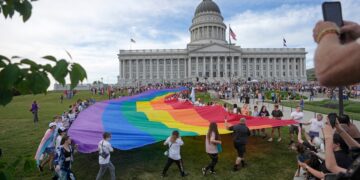
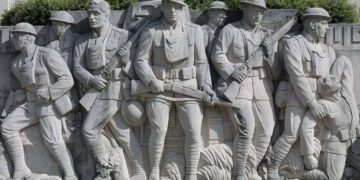
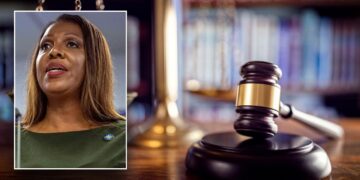

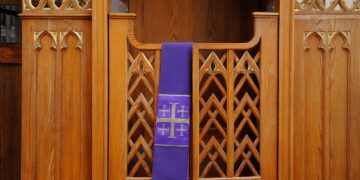
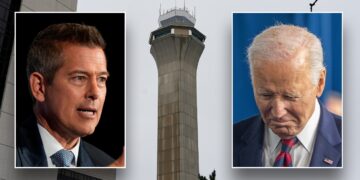


























 Reaction & Commentary
Reaction & Commentary
